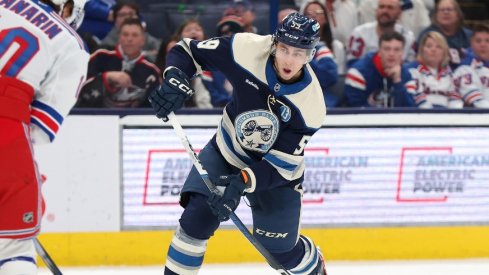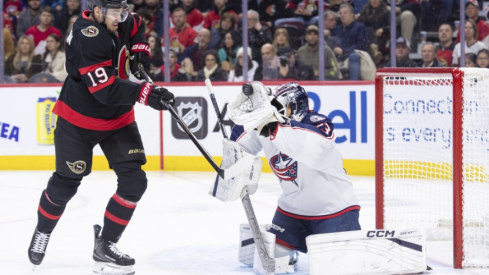Like many others, I dream of the day that Nationwide Arena is full again.
The pre-game buzz, the in-game atmosphere, the post-game camaraderie after a big win.
But when the Columbus Blue Jackets are playing in front of a 18,000+ 5th Liners again, they (and the NHL) have the opportunity to make the experience better than it ever was in a pre-Coronavirus world.
Since fans were allowed back in at the beginning of March, I've been to two Blue Jacket home games. The first, with a crowd of just under 2,000, was a little odd.
Okay, a lot odd. By my count, there were just two concession areas open in the lower bowl. Seats that did not have a ticket available were zip-tied in the upright position. Fans were encouraged not to congregate in the common spaces, to stay seated as much as possible unless heading for a bathroom (thank you, thank you, thank you, for tarping off every other urinal) or a concession stand, and to wear their mask (even when seated) unless actively eating or drinking.

All measures that are reasonable, and all measures that I support. But still, a new and moderately surreal experience.
The second game, with capacity more than doubled to around 4,500, things felt a little more normal. Quiet, relatively empty, but still gave the feel of a hockey game; it was a bit like the time a few years back when I saw the Blue Jackets play the Florida Panthers in Sunrise.
Still, both games provided some positive in-arena changes that shouldn't go away when all Coronavirus protocols are lifted - whenever that may be.
Getting into the arena was like a trip down memory lane. My life wasn't put into a plastic bin as the inspections were visual with the ol' "empty your pockets and hold the contents in your hand" routine, but I still felt safe. Stricter, tighter, zero-tolerance policies on handbags and purses made things easier, too. A much more fluid process. Would it carry over to a sold-out Saturday night crowd? Hard to say, but the line was moving - even when it had roughly the same number of folks as it would at certain times pre-Covid. I asked one entrance staff member how many problems she'd had the first few games, and her response to me was: "None. It's easy when people know they don't get to be the exception."
"It's easy when people know they don't get to be the exception."
The abundance of sanitation areas and the focus on providing a clean environment were also impressive - and these aren't things that have to go away when the last of the restrictions are lifted.
Nothing was better than the cashless environment, though. Tickets? On your phone. Want a beer? Use a card. Between the two games, I stood in lines a total of four times. When I think back to comparably-sized lines before COVID-19, these lines absolutely moved faster. (I also wasn't trying to be suckered into buying 50/50 raffle tickets, which was nice.)
Outside of the arena, the NHL can use this opportunity to make big changes to the schedule. The back-to-backs against the same opponent in the same city have been fantastic. It's done a lot to boost (or create) rivalries across the league. When Columbus returns to the metro division next year, imagine a Friday and Saturday night at Nationwide Arena against the Pittsburgh Penguins. Or Columbus winning back-to-back games in D.C. against the Capitals.
For some more novice fans, seeing the same players two nights in a row (or two out of three nights) can help get them acquainted with other teams rosters, which can help spark further interest.
With the NHL returning to ESPN next season, there is also a huge opportunity for hockey to take that next step. If the marketing teams can capitalize on the back-to-backs and new fans, the league can flourish like it never has before.


